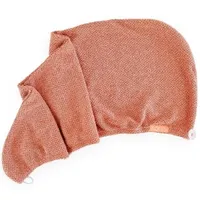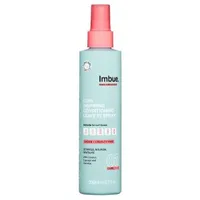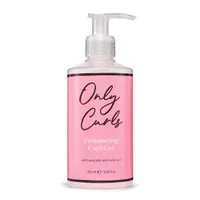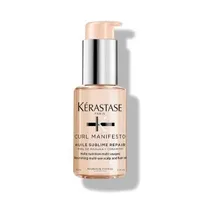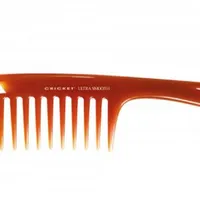How to detangle curly hair
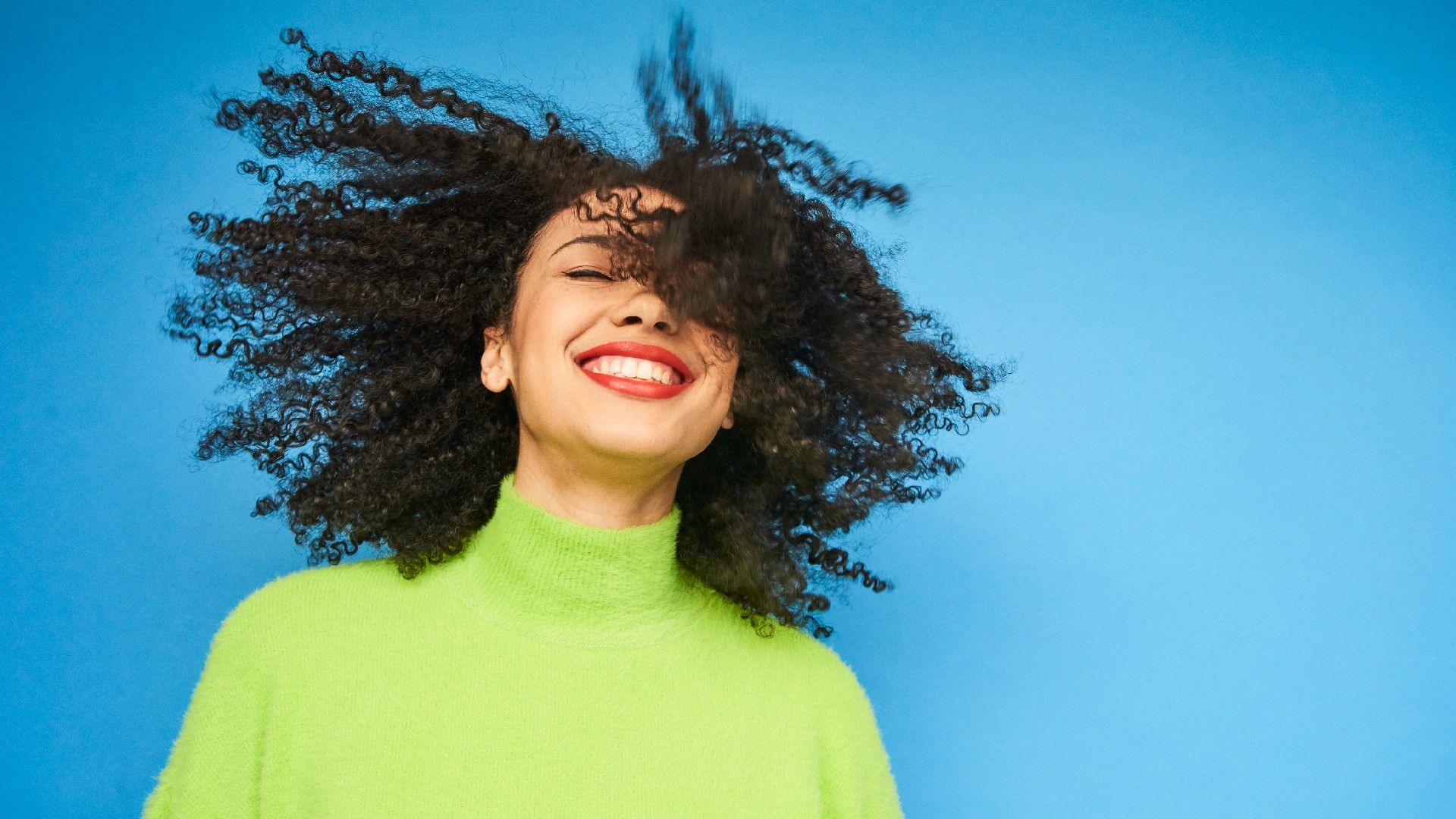

Learning how to detangle curly hair can be hard work. So hard in fact, that many of us curly girls have spent decades straightening our curls into submission.
Those with natural hair textures will know exactly how to wash your hair and how often to wash your hair to get the most out of those beautiful coils, but what about taming tangles?
The thing is, curls and kinks can go from defined, silky and springy to a matted mane in no time at all. Another important factor to take into consideration when learning how to detangle curly hair is the fact that as a hair type it is far more delicate than straight hair. Learning to brush your curls properly is essential to avoid damaged hair.
Now that curly hair is finally getting the love it deserves, there’s a whole host of us embracing our natural textures but with little to no idea how exactly to care for our curly hair. This is where we come in. We've asked the experts for their top tips on navigating knots, banning breakage to properly learn how to detangle curly hair.
How to detangle curly hair
Step 1: Use the right brush
Whether you detangle your curls when your hair is dry or wet, one thing everyone can agree on is to use a wide tooth comb or a brush designed specifically for the task.
WetBrush Original Detangler - Boots | £11.99
Once you switch to the WetBrush, you won't look back. It makes brushing hair a lot less painful, even when it's a mass of knots.
Step 2: Apply conditioner
To get the slip in your hair that’s needed to coax out tangles without lots of breakage pick a deeply nourishing conditioner or mask for wet hair or an oil, serum or heavy-duty detangling spray for dry tresses.
Step 3: Start at the ends and work upwards
Once your hair is primed with moisture use your chosen tool to detangle, “starting at the ends and gradually work your way up towards the roots, rather than the other way around,” explains François. This helps to further avoid breakage and stops you from creating a mass of compounding knots all the way along the bottom of your hair.
Step 4: Rinse hair and gently dry
When your hair is fully detangled and rinsed clean, gently pat and squeeze hair dry with a microfibre towel. Microfibre is much kinder to strands than traditional cotton towels, as it minimises friction and pulling that can lead to damage and tangling. Plus, it helps with curl formation,” shares François.
Aquis Copper Sure Rapid Dry Hair Wrap - Selfridges | £30
This smart microfibre turban will cut your drying time in half and with less towel-drying and blow-drying needed, it means hair is less likely to become damaged. It's woven with an antimicrobial and antibacterial copper so the towel itself stays fresher for longer.
Step 5: Add moisture
Finally, once your hair is damp it’s time to give your curls and coils some much needed moisture to avoid tangling. “Using the LOC technique works wonders, especially for type 4 hair,” says Michelle Sultan, Imbue creative director and ambassador. The LOC technique is designed to lock in moisture and stands for liquid, oil, cream. Curly girls rave about how effective this method is to keep curls nourished, frizz free and ultimately less tangled. The liquid element comes by way of a spritzable leave-in conditioner. This stage is said to open the cuticles allowing further penetration of the products that follow.
Imbue Curl Inspiring Conditioning Leave In Spray - Superdrug | £7.99
Designed for curl types 3A-4C, this spritz-on conditioner is enriched with coconut, cupuaçu and camellia to detangle, de-frizz and define kinks, curls and coils.
Step 6: Lock in moisture with hair oil
Oil is up next, and the type you use should be determined by how porous your hair is. To lock all the moisture in place, and define your curls, a cream like the Cantu Shea Butter For Natural Hair Coconut Curling Cream comes last. Be sure to apply all your products not just on the top and bottom layers of your hair but rather part your hair into sections and apply each product type to each section – you’ll be amazed at how much of a difference to the look of your curls this will make.
Cantu Shea Butter For Natural Hair Coconut Curling Cream - Boots | £5.33
This nourishing cream has earned thousands of adoring reviews, and can be used on damp hair, working through a small section at a time, or on dry hair to re-moisturise frizzy curls.
How can I detangle curly hair without ruining the curls?
“To avoid tangling after your wash day, my number one piece of advice is to protect your hair overnight, by way of a satin or silk bonnet if hair is short. Or for hair past the shoulder, I recommend tying the hair up into a ‘pineapple’ using a silk or satin scarf,” shares Kayganich.
The pineapple is essentially a super high ponytail achieved by gathering all your curls up towards the crown and securing them by wrapping a silk scarf around your head.
Only Curls Pineapple Protector - Only Curls | £10
This is an elasticated satin headband with a wide satin back that covers the hair, preventing frizz caused by your pillow and helping to keep your pineapple in place.
Alternately “if you don't like to have things on your head overnight, then invest in a silk or satin pillowcase,” adds Kayganich. This technique minimises tangles and for any that you do find when shaking out your curls come morning, start by spritzing hair with water using a misting bottle. “The water will reactivate the products already on your hair, and help you gently detangle any curl clumps with your fingers, before scrunching in a little more styling product like the Only Curls Enhancing Curl Gel to redefine your curls,” shares Only Curls founder Lizzie Carter.
Only Curls Enhancing Curl Gel - Only Curls | From £8
For starters, this oil-infused gel smells absolutely delicious. It fights frizz and locks curls in shape with a medium-strength hold without the dreaded crunch you get from other curl gels.
Should you detangle hair when it’s wet or dry?
The jury is out when it comes to detangling your curls when your hair is wet or dry. Kerastase educator and hairstylist, Vernon François told us,“I always prefer to detangle hair pre shampooing, when its dry, as hair is most fragile when wet,” shares
Why is it more fragile when wet you ask? Well, it’s a matter of chemistry. “Our hair is made up of proteins aka keratin, and keratin is made up of amino acids, bound together by chemical bonds one of which is hydrogen. This particular bond is easily broken by water and heat, so when hair is wet it’s stretchier, but also more fragile and prone to breakage,” explains trichologist Ricardo Vila Nova.
It’s this breaking that Vernon wants to avoid which is why he prefers to comb ‘from the ends, upwards, using a little Kerastase Curl Manifesto Huile Sublime Repair Nourishing Hair Oil to aid in the process.”
Kerastase Curl Manifesto Huile Sublime Repair Nourishing Hair Oil - Look Fantastic | £33.90
This versatile oil is enriched with a ceramide and Manuka Honey blend to intensely nourish and soften dry curls and coils. You can use it in three ways. As a leave-in styling oil on wet or dry hair, as a scalp conditioner, or even a pre-shampoo treatment on dry hair which you wash off in the morning.
While Kayganich prefers to “thoroughly detangle first with fingers then with the Cricket Ultra Smooth Detangler Comb, after conditioner has been left in the hair for at least 5 minutes.” She and many others believe that despite hair being at its strongest when it’s dry, water and a mega dose of moisture give curls major slip which allows for an easier detangling session, but ultimately, it’s best to test both methods and see which method works best for your curls.
Cricket Ultra Smooth Detangler Comb - Salon | £5.50
Even long and thick hair is not match for this chunky comb, which coaxes out tangles from wet or dry hair. It's infused with naturally-derived oils and Keratin protein to help repair damage as it combs.
Why does curly hair get so knotty?
Curly hair can often get so knotty because it tends to be drier than normal hair, so the strands mat together. As curly hair also has more curves and bends, it has a propensity to clump together and tangle.“Curly hair is very different to straight or slightly wavy hair, not just in appearance and shape, but also in that the thickness of individual hairs differ as does the condition of the scalp – which tends to be drier,” shares Dr Rolanda Wilkerson PhD, Pantene’s principal hair scientist and creator of Gold Series.
This dryness extends to your curls too, as their twisty shape, and naturally lifted cuticles stop the little natural oils from the scalp that us curly girls do have, from making their way down the length of the hair. This is one of the main reasons curly hair is prone to tangling says Hairstory stylist & curl expert April Kayganich. “Curly hair is in constant need of moisture, and when hair is dry it is more likely to wrap around other hairs and tangle together,” adds Kayganich.
Video of the Week
Parenting advice, hot topics, best buys and family finance tips delivered straight to your inbox.

Stephanie is a Beauty Editor across five national women’s magazine titles, with more than fifteen years’ experience working within the beauty industry. She has been shortlisted for multiple awards at the J&J Beauty Journalism Awards, and was the runner-up at the Wella Hair Journalism Awards in 2009. She has written for many brands, including Grazia, Now, More!, Fabulous, Woman & Home, NW, Woman, Woman's Own, Woman's Weekly, Essentials, Best, Chat, Pick Me Up and OK! Online. In 2010 she launched her own beauty blog, which was also shortlisted for Best Beauty Blog in the 2011 and 2012 J&J Beauty Journalism Awards.

